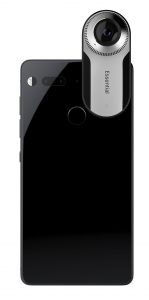This past weekend, how many people went into hardware stores looking for nails?
Very few.
Of those who came out of the store with nails, most went into the store looking for a way to hold two pieces of wood together. Some of those people chose nails; others chose screws; some decided on glue; some are going to make a dove-tail joint; and then there are those like me who decided that duct tape would be just fine.
I have used this metaphor before, describing the need to apply a systems engineering approach for broadband. It is often a real challenge to define requirements without specifying a solution, allowing flexibility in the choice of technologies to satisfy the requirements.
Frequently, I have said that we need to ensure that we remain technologically agnostic, even though so many associate fibre with advanced broadband. Through the weekend, I tweeted a few mobile speed tests that I conducted, looking at how the TELUS and Freedom Mobile networks performed with a couple of the latest devices optimized for performance on each of the respective networks.
Frankly, I could probably talk for hours about the implications of the 4 pictures attached to the two tweets that you can examine below. I want to focus on the headline speed results from the TELUS network on a Saturday afternoon driving south on Bathurst Street near Eglinton Avenue. The download speed was close to 175Mbps, a speed that would thrill most for achievement on home networks, let alone mobile. Can we finally put to rest the view that advanced broadband needs fibre connections?
The network performance comparisons raise other issues that might merit further discussion, including:
- Will policy makers acknowledge the role of wireless networks in rural and remote network architectures to bridge the digital divide, fulfilling the national gigabit dream?
- Device portability: unlocked devices may allow basic features and some network connectivity on other networks, but not all devices operate the same on all networks. Do Canadians understand what the CRTC’s unlocked phone policy will mean in practical terms? Did the CRTC even hear evidence on these points?
- Operating under load at a sporting event, Freedom Mobile’s network operated at close to the same performance as the TELUS network. What does this mean for spectrum policy, as the government begins to seek public comments on potential spectrum releases over the next five years?
- Do we have the right policies to encourage investment in more towers, as I have written before?
What other questions are raised in your mind by the images in these tweets?
By the way, if you get a chance to test drive an Essential phone, be sure to check out the 360 degree camera (that is actually doing 360×360 recording). It is amazing technology.
Speed test on Bathurst and Eglinton. @TELUS Essential phone vs @FreedomMobile LG V20. Will do again soon @BMOField
Interesting pic.twitter.com/Xei8Ap7E3Q
— Mark Goldberg (@Mark_Goldberg) October 7, 2017
Speedtest again @BMOField: @TELUS Essential and @FreedomMobile V20
What do these results say? pic.twitter.com/olBPOaJCHs
— Mark Goldberg (@Mark_Goldberg) October 7, 2017

